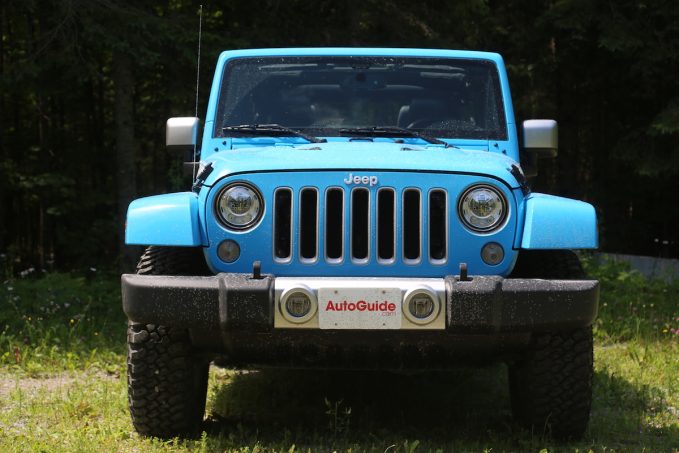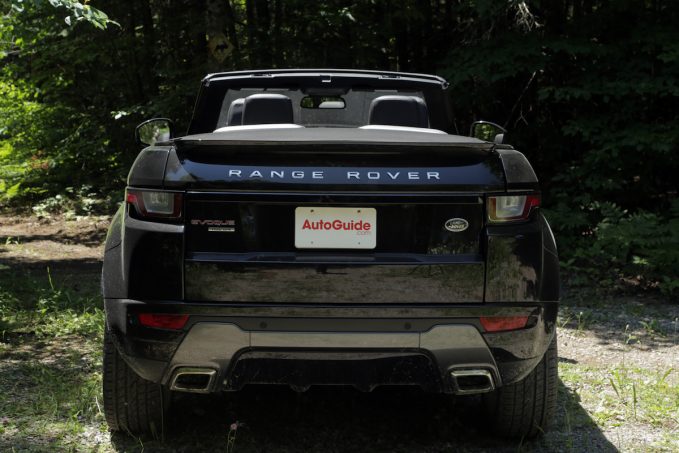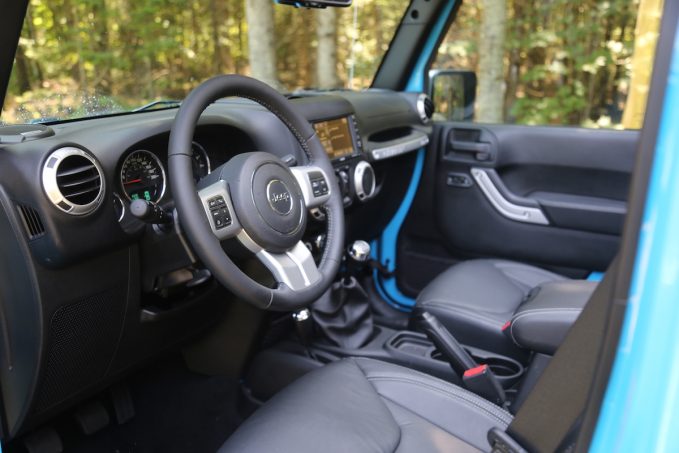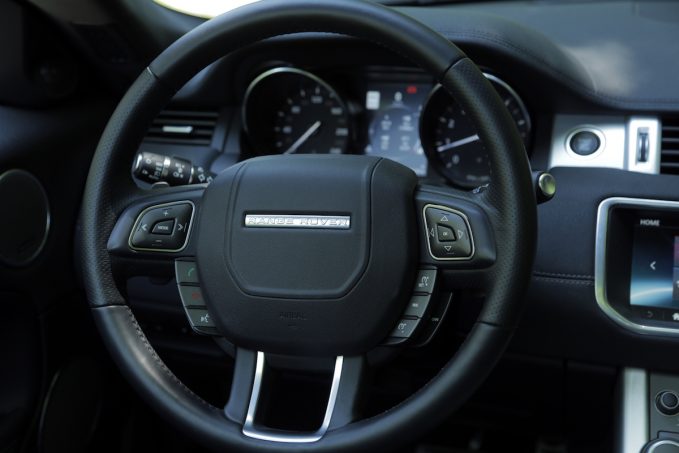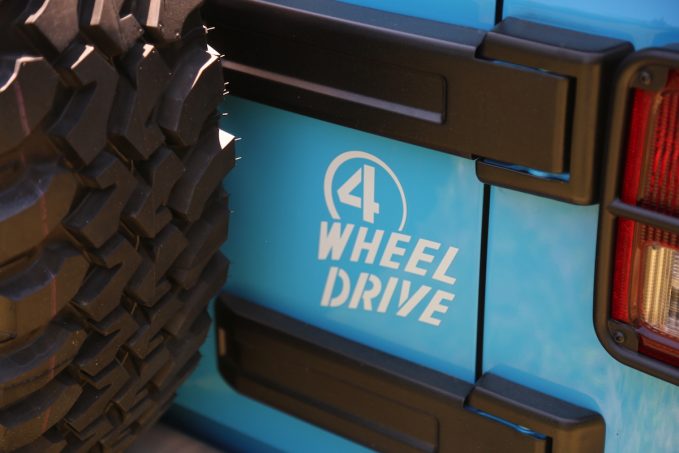Can you name a true Jeep Wrangler competitor? Based on pure mountain-goat levels of climbing ability, sure, you have vehicles like the Chevy Colorado ZR2, Ford Raptor, and Ram Power Wagon. Each an excellent off-road vehicle in its own way, but none a small body-on-frame SUV with a removable roof, doors, and windshield.
The Toyota FJ Cruiser was the last vehicle to come closest to the Wrangler’s recipe, but even the Japanese Jeep has a fixed roof. No, there is nothing on the market that truly offers the Wrangler’s combination of attributes. But there is one unlikely competitor that comes pretty close.
Unlikely Competition
With a four-wheel-drive system, plenty of off-road-specific driving modes, and a roof that opens to the let the sunshine in, the Land Rover Range Rover Evoque Convertible offers most of the Wrangler’s attributes, missing the body-on-frame bit. And six cylinders. But the Evoque also comes with a badge steeped in off-road history, so we took a Wrangler to lead the Evoque through some light off-road obstacles (well, light for a Wrangler, anyway), to see if the Range Rover could even keep up.
Get the Flash Player to see this player.
On paper, it doesn’t look promising.
You see, the Wrangler has all the basic off-road characteristics you want. Like a 42.2-degree approach angle and 10 inches of ground clearance versus the Evoque, which sits just 8.3 inches from the ground and has a low approach angle of 19 degrees.
Our Wrangler Chief special edition was also fit with BF Goodrich Mud Terrain tires, adding grippy off-road rubber to already great clearances. What the Evoque lacks in old-school off-road traits it makes up for with its clever Terrain Response system.
You can choose between Loose Gravel, Mud, Sand and Snow modes, each adapting the four-wheel drive system for optimal traction. For example, throttle response is dulled in gravel mode to hold traction, while traction control is quicker to intervene to prevent tire slip. In sand mode, the throttle response will be sharpened and shifts are held longer to keep torque accessible, making sure the vehicle doesn’t sink.
ALSO SEE: Land Rover Discovery SVX Makes SUV More Off-Road Capable
Other technological tricks up the Evoque’s sleeve include a wade depth sensor that will show how much water you are driving through on the info screen and signal when you hit the Evoque’s maximum wading depth of 19.7 inches, along with a hill descent control feature and All-Terrain Progress Control. That last one is a different name for a feature that is becoming common in the off-road world. All-Terrain Progress Control allows you to set the speed of the Evoque and forget about the gas and brake; so whether you’re on a steep hill or crawling over big rocks, you can focus on your steering and forget about keeping progress smooth.
And while the Evoque’s tricks didn’t save it from some trail damage, it did help it get out without the need for a tow rope.
Making it Through in Nearly One Piece
Our first obstacle was a long, muddy, water-filled trench and it proved tough for the Evoque’s low chin. After the Wrangler walked through it with ease, the Range Rover also powered through the mud and water with only minimal wheel spin. The issue was, the weight of the water managed to break loose a plastic valence on the bumper, dislodging the clips holding it together, unfortunate for a vehicle able to wade through so much water.
Next was a short hill descent with a tight turn at the bottom, edged by rocks big enough to get hung up on. Even the Wrangler had to be gently driven through, but it was easy to do so without the need for a spotter, partially because the sightlines in the Wrangler are so good thanks to the high seating positions, but also because once again the clearances mean that the majority of the time, you’ll make it over an obstacle unscathed.
Compare Specs
In the Evoque, things progressed smoothly, but not quite as easily. While its clearance was enough to stay out of the rocks, a spotter was necessary to watch the low front end, though the Evoque’s brains did help with the hill. With the All-Terrain Progress Control set, the Evoque was smooth and calculated in everything it did, never slipping a tire or upsetting its calm demeanor.
So even on simpler terrain, the Evoque can be a bit of a handful to bring through unscathed, but it made it through without needing a tow or any major repairs, which is more than could be said for many luxury crossovers tackling th
is sort of ground.
And while off-roading may not be the strongest point for the Evoque, it takes a clean win in one area against the Wrangler: on-road driving dynamics. The Evoque Convertible feels at home on twisting country roads, staying flat through corners and diving excitedly into corners, its all-wheel-drive system using torque vectoring to help it rotate and stick to the road.
Then there’s the Evoque’s powerful 2.0-liter turbocharged engine that makes 240 horsepower and 250 lb-ft of torque, numbers that feel underrated when you feel this Range Rover take off. The Wrangler still has more power with the 285 hp and 260 lb-ft of torque from its 3.6-liter V6, but because peak power isn’t available until higher in the rev range (4,500 rpm for peak torque; 6,400 rpm for peak hp), the Evoque feels like it takes off quicker and offers more low-end torque. The Wrangler’s power is there, but you have to really wring its engine out to find it.
And to top it off, the Wrangler is one of the worst vehicles on the road today when it comes to driving dynamics. It leans around corners, the steering is loose and it tends to wander all over the place. So in the battle of driving down the highway, the Evoque takes it with no contest.
The Price Gap
There is also the price gap to be considered here. The Jeep Wrangler Chief special edition sells for $39,340 while the Range Rover Evoque Convertible HSE Dynamic that we tested sells for $59,790, a difference of just over $20,000.
The Verdict: Fun-in-the-Sun Convertible Off-road SUV Comparison
Though few will likely actually compare these two, the takeaway from this proves that besides its luxury pedigree, the Range Rover Evoque Convertible isn’t useless when you take it off-road. Thanks to some engineering tricks, it turns out that poor clearance can even be overcome, to a point. Because at the end of the day, clearance is still king when the going gets rough.
Oh, and if you’re buying a Wrangler and NOT taking it off-roading, you’re doing it wrong.







